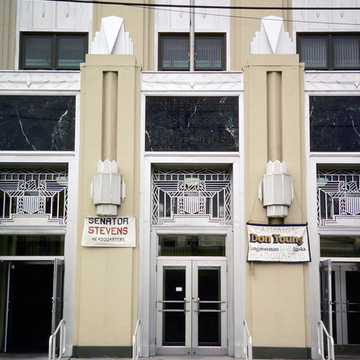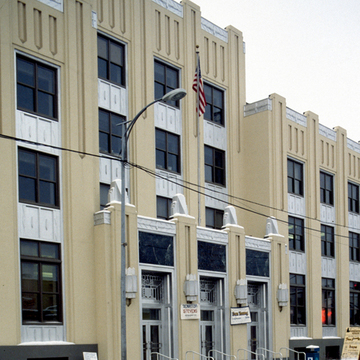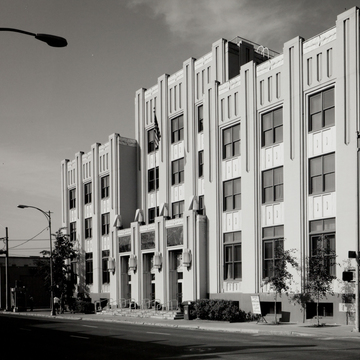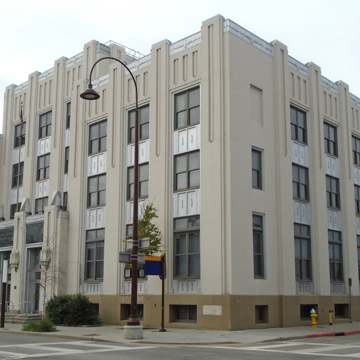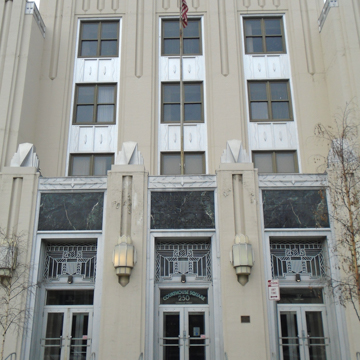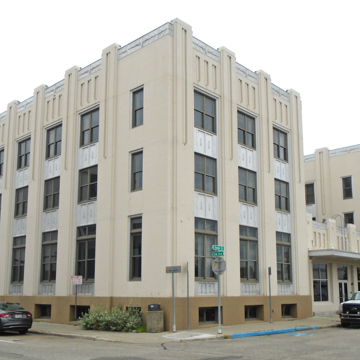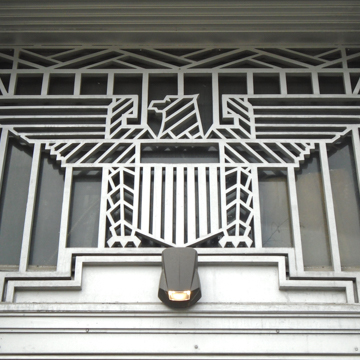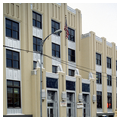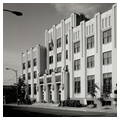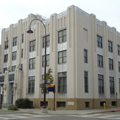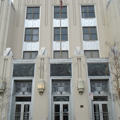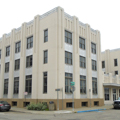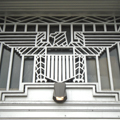Occupying one whole block in downtown Fairbanks, the three-story U.S. Post Office and Court House is an Art Deco monument symbolic of the federal government's role in establishing Fairbanks. In 1903, Judge James Wickersham decided to move the seat of the Third Judicial Court to Fairbanks, thus ensuring the survival of that fledgling town. He immediately ordered that a wood-framed courthouse be built, which was succeeded by another in 1906. As a delegate to Congress from 1909 to 1917, Wickersham attempted to obtain funding for a replacement. In 1914 the Fairbanks postmaster noted that Fairbanks was “the commercial center for a radius of more than 300 miles,” and with the coming of the government railroad, a new building “will be a positive necessity.” The postmaster recommended concrete construction, even at that early date.
Funding for the building was not obtained until 1931 (when James Wickersham was once again Alaska's delegate to Congress), but several years earlier, the office of the Supervising Architect of the Treasury inquired into the feasibility of concrete as a construction material in Fairbanks's harsh climate. Joseph M.
With that advice, George Ray, a Washington, D.C., architect, was hired to design a reinforced-concrete building. The recessed center block of the building is four stories high. On either side, three-story blocks are brought forward. Each of the three blocks is three bays wide, with similar fenestration, which includes aluminum spandrels between floors and strong piers between the bays. The piers rise above the aluminum-capped cornice. All of the aluminum trim has Art Deco detailing. Entrance is through a one-story portion in the center of the facade, below green marble panels. The lobby has fluted pilasters executed in a dark-stained wood, ornamental plaster ceiling, and marble baseboards and borders on the terrazzo floor. The courtroom on the third floor (now fourth) has a coffered ceiling.
In March 1932 the supervising architect let a contract for the construction of the building to the William MacDonald Construction Company of Saint Louis, Missouri, for $393,000. Most of the building was completed and occupied fourteen months later, with only the aluminum trim causing a delay. The post office, courts, and other federal offices occupied the building until 1977, when they moved to new quarters. The building has been renovated for private office space.










